After years of camping and spending as much time as possible in the outdoors, I can say that knowledge to sleep under the stars requires a certain learning curve. It doesn’t matter if you camp in good or bad weather, if you are doing it for pleasure or in an emergency, there are always three key factors you need to consider.
These three variables are well-known by experienced campers and are always considered when establishing their shelters. I learned about their importance a while ago by using the “IOU” acronym, which stands for Inside, Over, and Under.
I first learned about this concept from Ray Mears, a survival and bushcraft expert who presented it in his books. This principle applies to everyone, regardless if you are an outdoor enthusiast, a survivalist, or a prepper, and mastering it will make sure you build a proper shelter in any environment you can possibly imagine.
The principle follows the common-sense rules of shelter building and includes something to sleep in (the I), something to sleep over (the O), and lastly, something to sleep under (the U). This, of course, will depend on the environment and will be dictated by the scenario you are facing. It goes without saying that every climate has its own challenges, but even so, you can address these various challenges by following these three variables.
Inside
When discussing this variable, most people will assume that it refers to a shelter (natural or man-made), but that’s actually the second layer. The first line of defense against the cold and the elements are actually your clothes. You should have enough clothes to spend at least 24 hours outdoors, dry and warm.
Your clothing needs to be modular because you should be able to sleep and work in your clothes without problems. Depending on your level of activity and the elements, you should be able to peel off or add a layer as needed.
Your clothes will get wet and dirty and won’t insulate your body efficiently, resulting in failure to regulate your body’s core temperature. While you should have a set of clothing for sleeping, you also have to consider a second insulation layer. This may be a sleeping bag, quilt, tent, or natural shelter. When you lack man-made items to sleep inside, you should consider using natural insulation or various fire-heating methods.
What it’s also important to mention here is that what you choose to sleep inside can often depend on various factors. For example, packing something to sleep inside requires backpacking room, and you need to make sure what you’ve packed is ideal for your environment. Another example would be a scenario in which the “sleeping inside” factor is planned for, or perhaps it’s an emergency situation in which you have to make do with what’s available.
You need to match the insulation layers to your environment, and you must make sure it stays dry, free of tears and that you have enough space to carry those insulation layers. Also, check that they are rated for the appropriate temperature because it would make no sense to get a summer tent if it’s snowing outside.
If you are forced to improvise using natural resources, you shouldn’t overlook materials such as dried leaves, grasses, needles, and others since these can be used as an extra insulation layer with your current setup by layering them on top of it.
A trash bag, for example, it’s lightweight and doesn’t take much room in your backpack. You can use it for material collection and improvise a mattress or insulation layer, or you can use it to keep your clothes dry.
Regarding the things you pick to sleep inside, you shouldn’t forget about a protection layer that will keep you safe from insects and other critters that want to feast on you. For example, a hammock has insect netting, and such a layer can be improvised for other sleeping items as well.
Another thing worth mentioning is that you have to maintain your shelter each morning by adding additional insulation where it was worn or matted down. Also, don’t forget to aerate and dry your clothes in the sun or around a fire.
You should never assume that your outdoor “expedition” will last as expected, and each day you should work on improving your shelter to make it stronger and more durable with whatever items you can gather or repurpose.
Over
The layers we mentioned above will protect you from the cold environment around you, but they won’t do a good job of separating your body from the ground beneath you. Heat transfer occurs when a warm surface touches a cold one, and in this case, your body, sleeping bag, or clothing will transfer heat to the ground beneath you.
This is often the main cause of hypothermia, even if you find yourself in a warm environment. You need to create a dead-air space to sleep over to prevent your body from losing heat and succumbing to hypothermia.
If you planned for this trip, you’ve probably packed a closed-cell pad or some type of inflating pad to keep you off the ground. In some environments where the ground is unhospitable, bringing a hammock is ideal since it lets you sleep over damp ground, uneven terrain, and even sharp rocks.
In an emergency, what you sleep over requires a great deal of improvisation, and it will help you survive the cold night. The trash bag we mentioned can come to your aid in this scenario since you can fill it with fluffy debris and use it as a beanbag chair. If you have a tarp, you can place it on the ground to create a waterproof shield and prevent your clothing from soaking up moisture if the ground is wet.
If you have the tools, you can build a raised bed from logs and use a poncho or a tarp as a wind insulator. This is usually recommended in a winter scenario when you have to make an effort to keep your body above the icy ground.
If you do find yourself in an environment with dry and cold ground, you can improvise a hot bed by digging a hole (the length of your body) and filling it with heated rocks or coal. Add a small layer of dirt over the heated material, and you can sleep directly on the ground. However, you need to pay attention since there are some risks involved. For example, heating porous rocks with water trapped inside can cause them to explode, and you may get injured. Also, speaking of injuries, you must make sure the heated rocks or coals are completely buried since you don’t want to roll over and wake up with a burn or light up your sleeping pad or any other flammable materials.
Under
Depending on the environment, you will probably need a roof over your head, and what is considered a roof may vary from one person to another. The tent you bring along will offer a roof over your head, and so will a tarp or a poncho. A camping hammock has a dedicated canopy that can protect you from falling bugs and the elements.
A roof will not only protect you from falling rain, but it can also act as an insulation layer, trapping the heat of your body depending on what it is made of. Even more, having a shelter with a roof can become a morale booster since you have a roof over your head, similar to back home.
There are all sorts of modern materials available on the market for campers and preppers, and leaving home without some emergency gear that can be used for improvising a roof, for me, is unacceptable. For example, an emergency blanket is lightweight and can be used to improvise a shelter or make a roof for a shelter you’ve built from natural materials. Carry some cordage as well and use it with the trash bags filled with grass and leaves to improvise a roof.
The shelter you build is not only your sleeping place but also the area where you live, so if you carry a 10-foot-by-10-foot tarp, you can use it to construct an A-frame or lean-to shelter with plenty of room for other activities as well.
Your shelter can be made from repurposed items, and your vehicle or a small cave can be converted into a proper shelter if you have the gear and resources at hand. In this case, the IOU factors are covered, and you will have to work less to improvise a shelter. Even sleeping under an overturned raft or canoe could be an option to create a shelter in the field.
If you are forced to work with only natural resources, you could look for natural shelters such as caves, downed trees, or a heavy evergreen cover as long as you make sure there are no inhabitants or build a shelter from available resources that would suit your needs. Take advantage of natural features and use your imagination.
Stay busy and always improve your shelter
Never assume that your shelter is temporary or that you can’t do anything more to improve it. There’s always room for improvement regardless of what items you’re working it. While a broken-down car may cover the IOU variables, that doesn’t mean it’s the perfect shelter. For example, sleeping inside a sleeping bag in your car is much better than sleeping in your clothes in just the car’s dead air.
Remember to update your emergency or bug-out bag as the season changes because it contains items that can be useful all year long, and there are items that need to be replaced depending on the expected temperatures. Not to mention that some items may expire or get damaged if they are not properly maintained.
When sleeping in the wilderness is a planned action, you should also ask yourself if the IOU factors are covered and what you need to do to make sure you make your situation comfortable. The same goes if an emergency forces you to evacuate and you find yourself in an unhospitable environment. Ask yourself what you will sleep inside, over, and under.





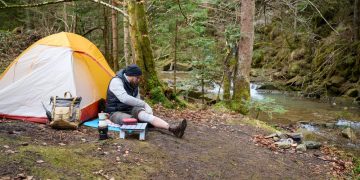


















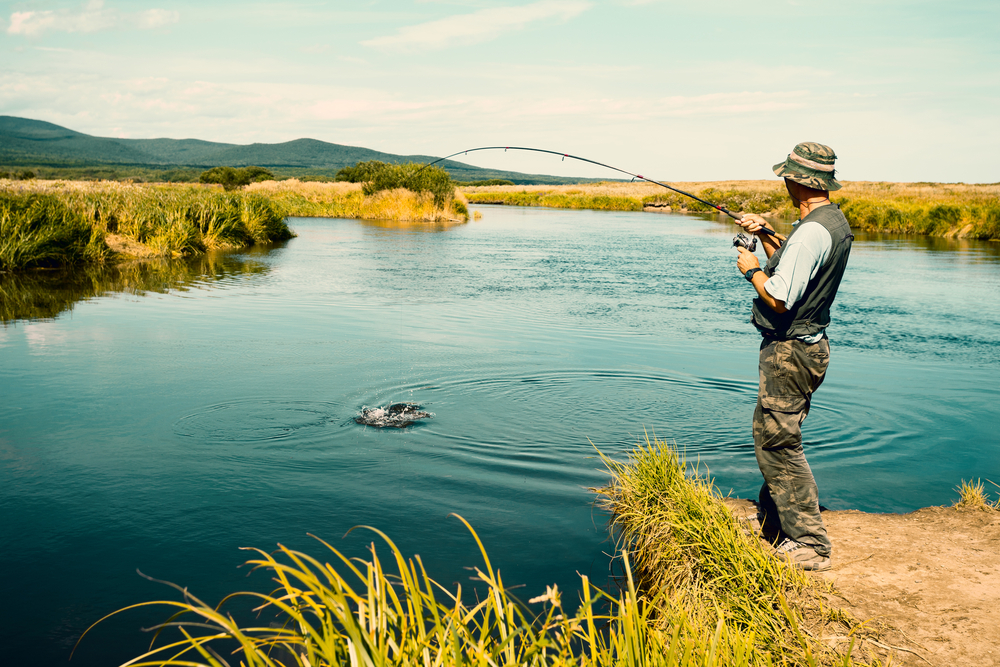


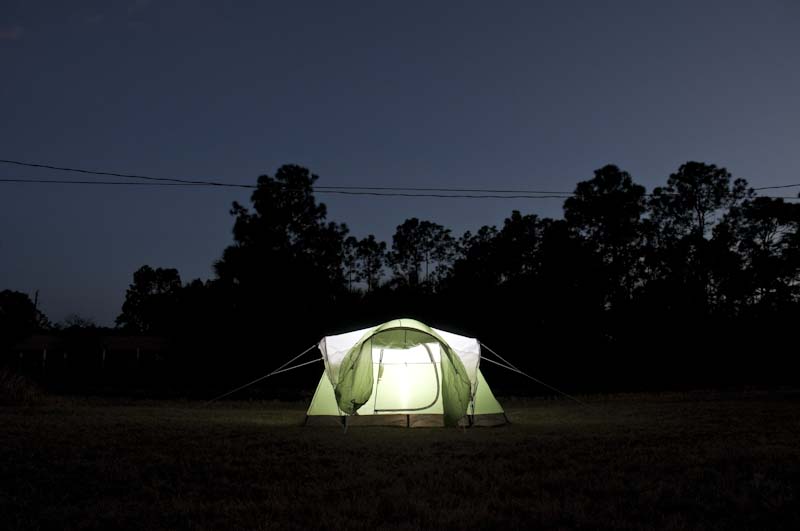







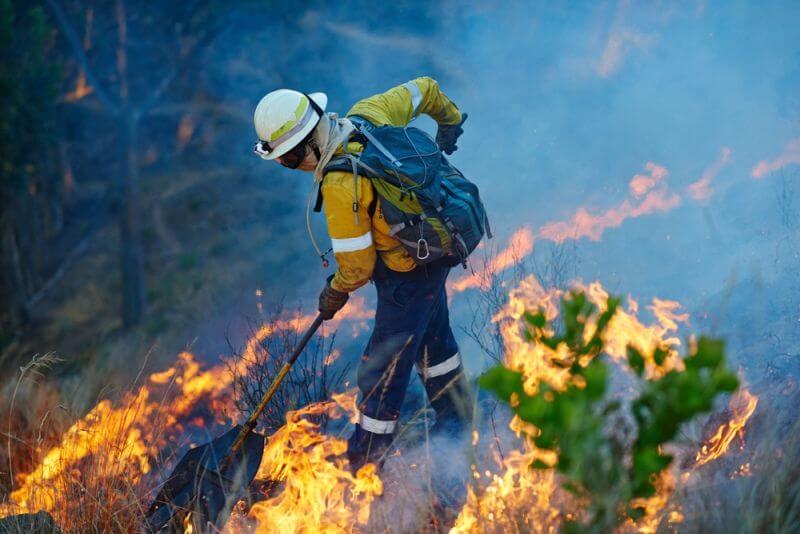
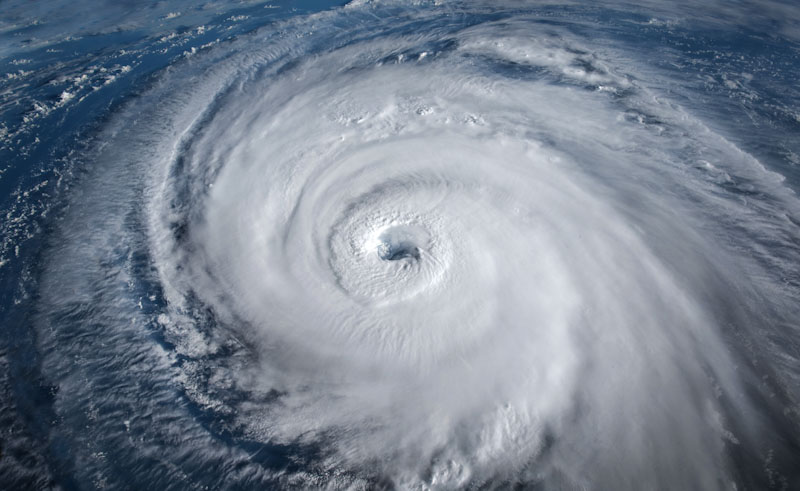



















































I have already bought your book. It is excellent!
I just wanted to share my latest project with you. Without electricity sewing will be limited. We have treadle machines… by singer, the old ones. Since I do not have zigzag by treadle, I made an adapter and converted one of my 401A Singer machines to zigzag, and have friends who are doing the same.
Bring empty sandbags for underneath you. David Canterbury (OH/IN) said you need four-inches minimum between you and cold ground, and six-inches is better. In a pinch a carpenter trash bag may hold up for several times, but 14-inch wide and 26-inch long polypropylene weaved sandbags with drawstring attached are sturdier, easier to stomp on to crush leaves, tinder-kindling, to reach the four-inch minimum sleeping platform, and they can be tied together with bankline or paracord. Add a second layer if you want more Under-Cover.
What can they do (when packed): bedding, recliner-seating, carry always needed dry tinder/kindling (and easy for kids to fill up and feel proud). If you arrived in your vehicle, you might be happy to have sand-bags filled with tinder/kindling/leaves to put over your car in a potential hail-storm, or even over your head. If you intend to bury-in-ground some supplies, you can dig a deep hole, and cover with filled kindling bags right up to the surface then smear some soil over it with a well planted slab-rock (for easy retrieval). This would be the fastest way to retrieve your cache during hard-frozen ground winter. Heck, move the rock, step on the 2-inch dirt covering, then haul out the kindling sand-bags, and pull up your container. I take two with me when I forage for roots, etc. Sometime you may want to dig a shallow trench to crawl in and travel without anyone seeing the profile of your body. For every foot of depth you dig, fill sandbags and create a wall blocking view to you and you may save time and hassle. Plus if you build a wall around you and cover it with branches, you may be very safe from dead-fall, deer on the run, etc. And what if you came upon a “long gone” old farmstead evidenced by one sole apple tree, full of apples. Do you take your coat off to haul apples, and possibly lose what was in your coat pockets? Some empty sandbags with drawstrings are just what you need. You can make wind-walls in winter (and with snow in them). If you had enough you could make a SHTF/“sand-bag” igloo.
Another thing that needs to be considered in the category of “What is overhead?” is what may happen during a lightning storm at a site one picks to camp at. The old Boy Scout safest safety-rule is if you are caught in a storm stay away from trees and lay down on the ground. One time in my young 20’s I was barefooted in my house and went out to the backyard to turn on the lawn sprinkler for my dying grass. Five minutes later a downpour started, so I ran out barefooted to turn off the sprinkler. The trees in my backyard hid from me the sky beyond them. Suddenly a lightning bolt hit a tree two houses down from me and the lightning traveled through the wet ground and I felt a sizzle on my wet foot that was on-ground while I was running to get out of the rain. The sizzle caused me to jump up in the air (a body reflex reaction). Had I been laying down in wet ground, my whole body would have sizzled. I have seen pictures of lightning strike wounds where it may hit a shoulder then travel down and come out of a leg. Lightning is crazy, says me—it follows its own logic.
I once directed a camp and would take small groups on hikes. One area I always stopped at was a gentle swale on a hilly mountain top. The area was about 35-feet long by 25-feet wide where every tree had it top broken and ripped off. I asked the group, what do you think happened here? Everyone was clueless. I told them that right before lightning hits the ground it spreads out like fingers off of a hand hitting a much larger area than what people would normally think. A lightning bolt exploded the tops off every tree in a fairly wide area and blew-off many “dead-fall tops” well-beyond the area where the trees were topped. The trees were all young, thin-appearing and tall, each about 6-8 feet apart in any direction. So it wasn’t just one tree in the bunch that was hit, but about 12 trees grouped together, all of them topless with jagged rips of wood at the top.
Every year the camp had to bring in a professional rappelling trainer to re-certify the camp rappelling counselors (working with teens). We were rappelling off a huge solid stone outcrop along a steep hill location. I said (dummy that I was back then) to the certified trainer, “Well, at least in a storm the cliff will help block the rain.” The instructor told us all that if a storm arises, everyone had to stop rappelling immediately and get away from the cliff face as soon as possible. This was in the Blue (a copper ore area) Ridge Mountains. Then he said lightning bounces off of hard surfaces, and it will also travel right down the sides of cliffs to reach lower ground. So lightning can and will easily bounce or ricochet off any hard surface.
I once met an older man who lived in the high plains of eastern Colorado, an area with no trees except at old abandoned farmsteads, towns and any tree a home-owner might plant. So, all houses stood “tall and proud” over wheat-ranching landscape. The man was sitting in his living room, with his fireplace on one living-room wall and the TV across from him on another indoor wall. He heard a loud bang above his house, then saw a huge “spark-light” come down the inside of his chimney, when it bounced off the concrete fireplace floor, then bounced again off two indoor living room walls before it vanished. The story numbed me when I realized that essentially NOWHERE IS COMPLETELY SAFE IN A LIGHTNING STORM, not by trees, not laying on the ground (if you are wet or muddy and a strike happens near you), and not even indoors if you are near a bare fireplace-chimney that does not have a cap over it (to keep out rain, birds, etc.). And plenty of homeowners will say, “Never take a shower during a lightning storm” because houses are frequently hit; and plumbing piping with water moving through the pipes creates a huge magnetic field that can attract lightning. There was a reason during olden times that people put lightning rods on the roofs of their houses with very thick bare wires hanging outside against the sides of the house exterior and going into the ground. They were trying to direct a bolt to go to ground outside the house and not inside it. That practice stopped when someone realized that the lightning rod was INVITING a lightning strike instead of trying to manage it to do less damage. Even inside homes electrical appliances are wired to a pipe should they have an electrical short so that the electricity can flow to the pipes to the underground incoming water pipe. Lightning is crazy; you cannot trust it, so don’t underestimate it.
A person may not have much choice if the woods are thick that one is camping in. The best choice I’ve learned (for me) is to carry sheet-plastic tarp for sudden summer storms that pop up quickly; and to never lean against a tree, but to get as low as possible while staying as dry as possible. If I were able to reduce risk by just one notch, doing that could save my life.
Lightning travels towards magnetic fields. In the ground magnetic fields can be caused by highly metallic ground and by underground snow melt flows of water, and streams. You can see its effect yourself by taking two metal clothes hangers and cutting them to make two “L” SHAPED rods. Then hold one in the palm of each hand, bend your elbows at your sides so that the long side of the rod is parallel to the ground facing away from you. Then turn-on the water of the outdoor hose (with no sprayer at the working end of it, so the water is flowing feely). Then approach the hose slowly and walk over it. Most “L” rods will cross each other forming an “X” as you stand directly over the running hose. The application is that large trees that grow tall and proud usually have some form of ponding water under the ground, or they are adjacent to an underground water seepage flow. So they are producing a strong magnetic field like the trees in the swale of the camp that had their tops ripped off. A cliff side can also form a swale underground at its base that you can’t see. So, when you hear the advice to “stay away from trees”. That does not mean just a foot away. It means 20-feet (and further) away. And avoid laying on the ground in the lowest place near that tree, because you may over an underground swale.
I would love to hear a story about a boater whose boat got caught in a storm and struck by lightning. What happened to the boater that survived that, and the boat? I’ve never been struck by lightning, but many have been. I would want to know what kind of shoes were you wearing and what happened. There is still a lot to learn on this subject because lightning is crazy-unpredictable!